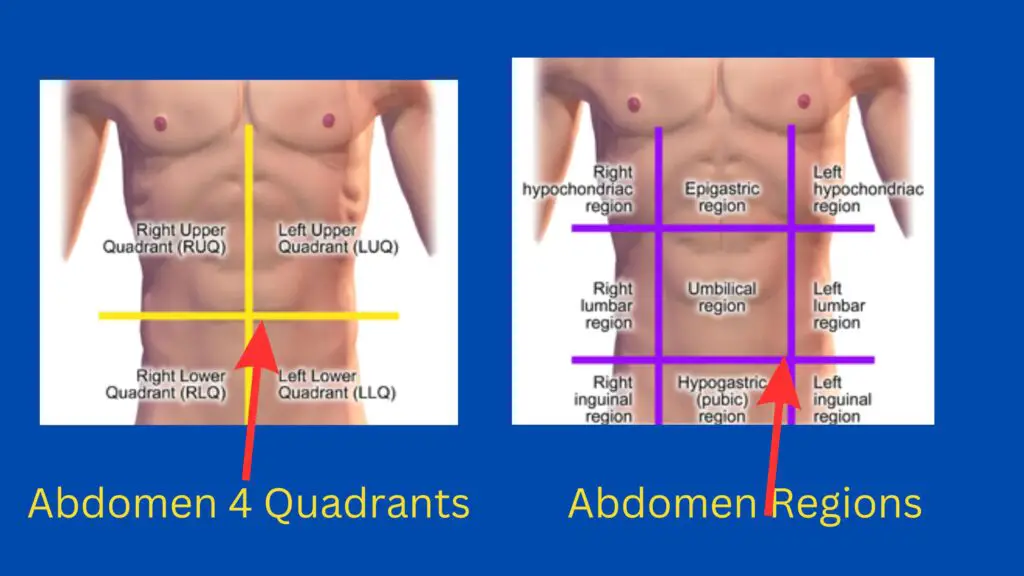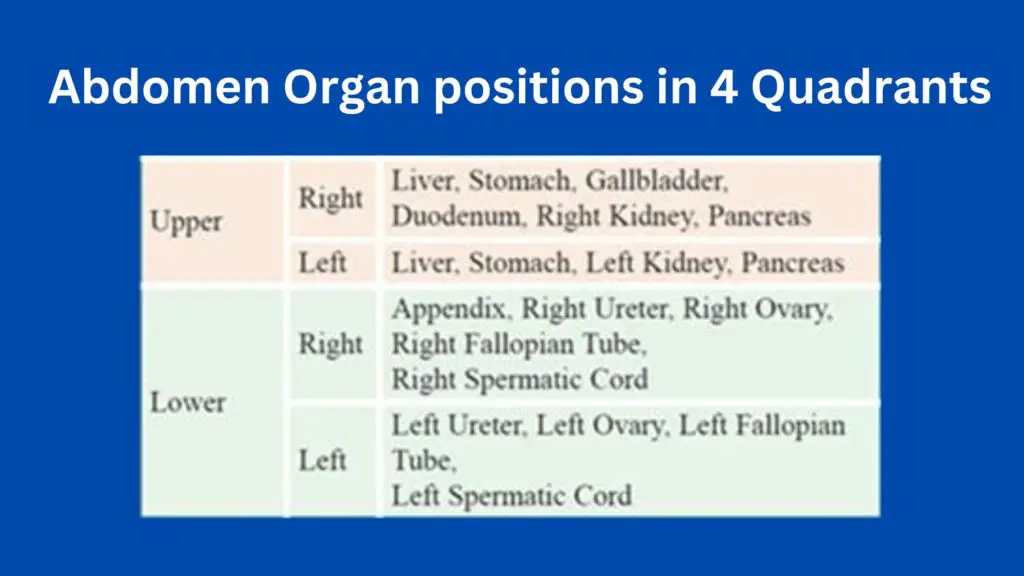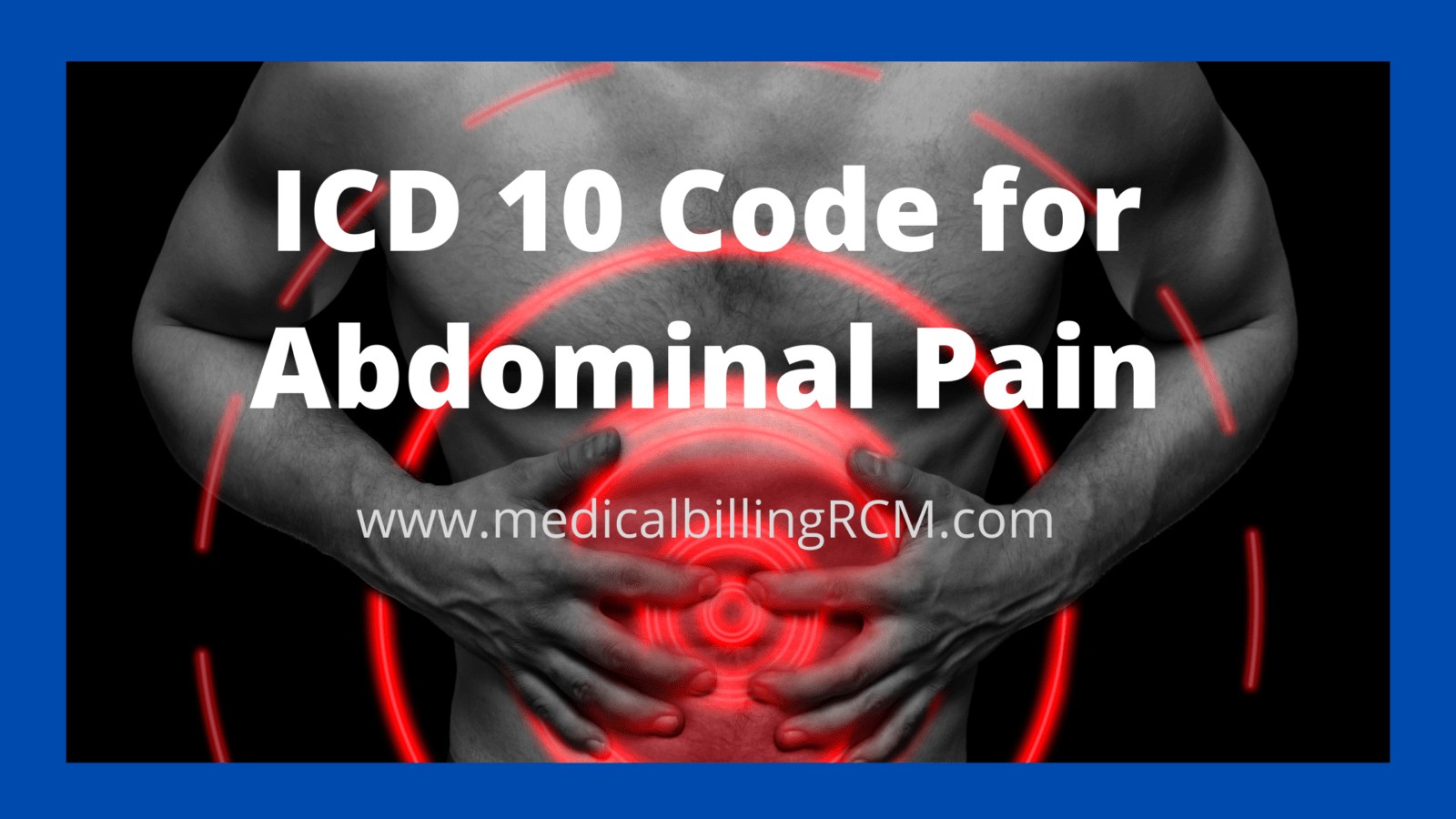ICD 10 codes can be defined as a way that doctors prefer to record diagnoses in a succinct universal language which contains three to seven characters only. There are times when a patient walks in and complains about their stomach pain. It becomes hard to find out what is troubling them. Abdominal pain ICD10 code R10. 9 for Unspecified abdominal pain.
This is when ICD 10 code for abdominal pain can be used to indicate the cause of their suffering even without knowing the actual reason behind it. There are two quick qualifiers for ICD 10 codes for the different forms of abdominal pain, such as-
- One cannot record the renal colic codes besides the abdominal pain codes.
- Abdominal pain codes do not reach up to conditions that are related to dorsalgia or flatulence. However, one can use similar codes in conjunctions alongside abdominal pain codes.
Table of Contents
- ICD 10 Code for Abdominal Pain
- What is Abdominal Pain?
- Lower abdominal pain
- Upper abdominal pain
- Left side abdominal pain
- Abdominal pain symptoms
- Causes of Abdominal pain
- Take a closer look on Abdominal Pain
- What are the Common Causes of Abdominal Pain?
- How to Prevent Abdominal Pain?
- Conclusion:
- FAQs
- Related Articles:
ICD 10 Code for Abdominal Pain
R10.9 – Unspecified abdominal pain:
- This code is used when the nature, site, or cause of abdominal pain is not specified or is unclear.
R10.821 – Right upper quadrant rebound abdominal tenderness:
- This code is used to indicate tenderness and pain in the right upper quadrant of the abdomen, often associated with conditions affecting the liver, gallbladder, or the area just below the ribs on the right side.
R10.822 – Left upper quadrant rebound abdominal tenderness:
- This code is similar to the previous one but pertains to tenderness and pain in the left upper quadrant of the abdomen, which can be related to issues with the spleen, stomach, or the area just below the ribs on the left side.
R10.823 – Right lower quadrant rebound abdominal tenderness:
- This code is used to describe tenderness and pain in the right lower quadrant of the abdomen. It’s commonly associated with conditions affecting the appendix, such as appendicitis.
R10.824 – Left lower quadrant rebound abdominal tenderness:
- This code is similar to the previous one but pertains to tenderness and pain in the left lower quadrant of the abdomen, often related to conditions involving the colon or left-sided abdominal organs.
R10.825 – Periumbilic rebound abdominal tenderness:
- This code indicates tenderness and pain around the area of the umbilicus (belly button). It can be associated with various abdominal conditions.
R10.826 – Epigastric rebound abdominal tenderness:
- This code is used to describe tenderness and pain in the epigastric region, which is the upper central part of the abdomen. Conditions affecting the stomach or pancreas may be linked to this type of pain.
R10.827 – Generalized rebound abdominal tenderness:
- This code is used when there is tenderness and pain that is widespread and not localized to a specific quadrant or area of the abdomen.
R10.829 – Unspecified site:
- This code is used when the site or location of abdominal pain or tenderness is not specified or known.
R10.83 – Colic:
- This code refers to colic, which is a type of intermittent, crampy abdominal pain often associated with gastrointestinal issues, such as gas or bowel spasms.
R10.84 – Generalized abdominal pain:
- This code is used when a patient experiences generalized abdominal pain that doesn’t fit into a more specific category.
What is Abdominal Pain?
Stomach is the most important organ of the body which plays an essential role in the functions of the body. Most of the internal problems of the body are related to the stomach. Stomach receives food and provides energy to the body. Many types of problems arise in the stomach due to irregular eating habits and other reasons and abdominal pain is one of them.
Abdominal pain are those that take place between the chest and groins. These are very common types of pain with almost everyone at some point of their life.
The location, duration and nature of the pain can provide important clues about the underlying cause. For example, upper abdominal pain may be caused by conditions affecting the liver, gallbladder, or pancreas, while lower abdominal pain may be caused by issues with the intestines or reproductive organs. Other symptoms, such as nausea, vomiting, diarrhea, constipation, fever, and bleeding may also be present and may help narrow down the possible causes.

Abdominal pain should never be ignored, especially if it is severe or accompanied by other symptoms. It is important to seek medical attention to determine the underlying cause and receive appropriate treatment.
Abdominal pain occurs due to infection, inflammation, obstruction, intestinal disorders, abnormal growths and more. It can be crampy, achy, dull, or sharp too and people even refer to it as stomach ache.
The seriousness of the pain can only be explained by how bad it is. Abdominal pain can be described in four ways including generalized pain, localized pain, cramp pain and colicky pain.
Lower abdominal pain
Whenever we have pain in the lower abdomen, it refers to discomfort or pain felt below the belly button and above the legs. Abdominal pain can be caused by a variety of factors, including digestive problems, urinary tract infections, menstrual cramps, constipation, ovarian cysts, hernia, and more. Depending on the cause, the pain may be sharp, dull, intermittent, or constant. Other symptoms may include nausea, bloating, and changes in bowel or urinary habits. Persistent or severe lower abdominal pain should be evaluated by a medical professional and the patient monitored closely to determine the underlying cause of the abdominal pain and appropriate treatment.

Upper abdominal pain
Upper abdominal pain refers to Discomfort or pain in the area between the ribs and belly button. It can be caused by serious factors such as gastrointestinal problems such as acid reflux, gastritis, peptic ulcers, or inflammation of the pancreas or gallbladder, leaving it untreated.
Left side abdominal pain
Left side abdominal pain refers to any discomfort, pain or cramping in the lower left quadrant of the abdomen, located between the rib cage and pelvis. The causes of abdominal pain on the left can vary widely and range from minor issues the patient may have, such as gas or indigestion, to more serious conditions such as kidney stones, diverticulitis or appendicitis.
Abdominal pain symptoms
Abdominal pain is a common symptom that can be caused by a wide variety of conditions. Following are the five common symptoms associated with abdominal pain:-
● Cramping can be a major cause of abdominal pain. This is a sharp, intense pain that comes and goes. This can be due to conditions such as gas, constipation or menstrual cramps.
● Heartburn is a dull, persistent pain that can be caused by conditions such as acid reflux, gastritis or ulcers.
● Sharp, stabbing pain that is often localized to a specific area of the abdomen. This can be caused by conditions such as appendicitis, kidney stones or gall bladder disease.
● You may also get fever due to abdominal pain and it may persist till the abdominal pain goes away.
● It is a feeling of fullness or bloating in the abdomen. This can be caused by conditions such as gas, constipation or irritable bowel syndrome (IBS).
Causes of Abdominal pain
Abdominal pain is a common symptom that can have many causes. Some possible causes of abdominal pain include:-
● Gastrointestinal Disorders
●Infection
● Reproductive System Disorders
● Musculoskeletal problems
● Chronic medical conditions
● Psychological factors
Take a closer look on Abdominal Pain
- Generalized pain
This type of pain is felt in more than half of the portion of the belly and it could occur due to gas formation, indigestion or stomach virus.
- Localized pain
This takes place only in one area of the stomach which could be a sign of problem in the organs.
- Cramps pain
These types of pain are normal and it could happen because of bloating or gas.
- Colicky pain
This occurs in waves and can occur because of kidney stones or gallstones.
What are the Common Causes of Abdominal Pain?
Some of the common causes of abdominal pain include the following:
- Constipation
- Diarrhea
- Stomach flu
- Vomiting
- Stress
- Acid reflux
- Gastroesophageal reflux diseases
- Lactose intolerance
- Kidney stones or infections
- Organ rupture
- Gallstones
Another common reason why one can feel pain in the abdomen is because of cramps that are associated with menstruation (commonly considered as pelvic pain.)
How to Prevent Abdominal Pain?
Abdominal pain can be treated or prevented depending on the seriousness. One can adopt a healthy lifestyle trying to prevent it by eating healthy, drinking a lot of water, exercising frequently, and eating meals in small quantities.
If it occurs frequently, then consult a doctor for further medical treatment and guidance.
ICD 10 Code for Abdominal Pain is R10.0 is a billable ICD-10 code used for healthcare diagnosis reimbursement of acute abdomen.
Conclusion:
Abdominal pain can be a symptom of a variety of conditions, from minor problems like indigestion to more serious diseases like appendicitis or cancer. If the pain is severe, prolonged, or is accompanied by other worrisome symptoms, it is important to seek medical attention. Early diagnosis and treatment can help reduce health discomfort and prevent further complications. We hope that you have liked this post and all your queries related to abdominal pain have been resolved.
FAQs
Ans. By the way, the treatment of stomach pain depends on its cause. So see a doctor for diagnosis and treatment. You can try home remedies, but these may provide temporary relief.
Ans. Beans and junk food should not be consumed during stomach pain. Rather, easily digestible green vegetables and pulse water should be consumed.
Related Articles:
ICD10 codes in medical billing
Palpitations ICD 10 Code R00.2
Note- Image Source – Google
The author and contributor of this blog "NSingh" is working in Medical Billing and Coding since 2010. He is MBA in marketing and Having vaste experience in different scopes of Medical Billing and Coding as AR-Follow-up, Payment Posting, Charge posting, Coding, etc.

